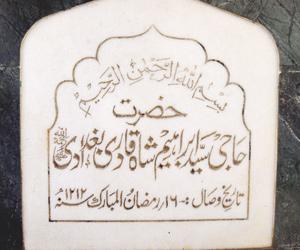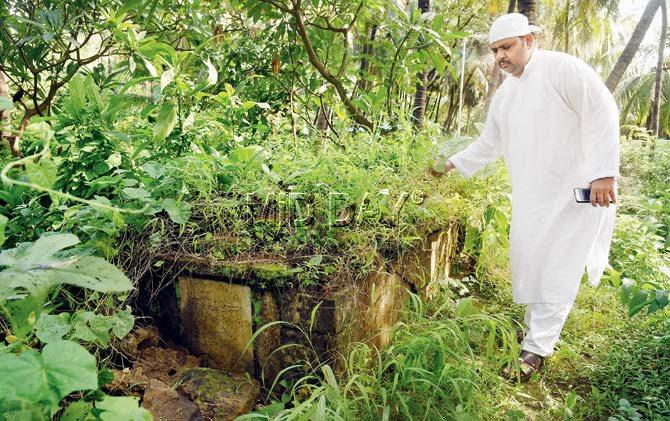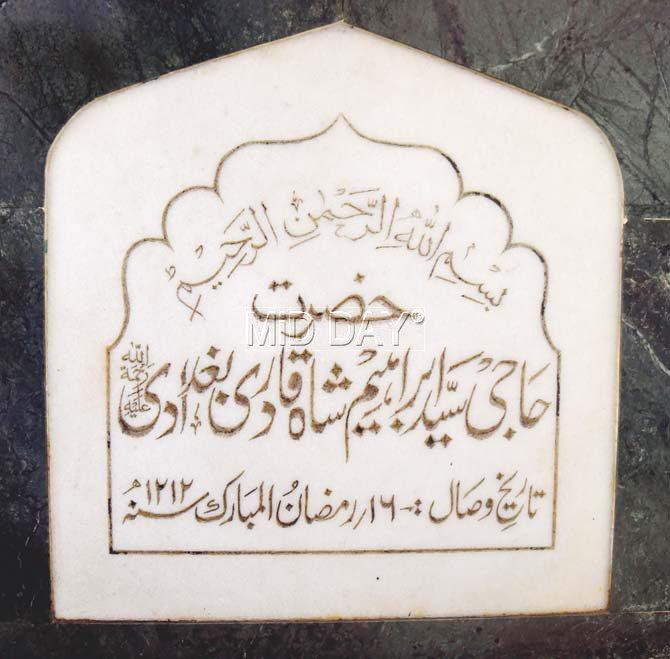A plaque from Dharavi leads researchers with the Salsette Survey to clues about Mumbai life in the era before the Portuguese

Last year, while conducting explorations in an area extending from Dharavi to Khar and Juhu, research scholar Dr Prachi Moghe recalls learning of a stone inscription with the name 'Hambir Rao' engraved on it at BARC. "Dr Salunkhe, chief horticulturist and Mugdha Karnik Director, of Centre for Extra Mural Studies (CEMS) found out about the inscription. It was intriguing because we rarely stumble upon objects that date back to the pre-Portuguese era," she says. Further research led to the revelation that Hambir Khan was a vassal or feudatory ruler of Feroz Shah Tughlaq, a ruler of the Tughlaq Dynasty, who reigned over the Delhi Sultanate from 1351 to 1388.
ADVERTISEMENT

Tadwadi Qabrastan at Dharavi where the plaque was discovered
"At the time, areas like Mahim and Dharavi were ruled by either the Gujarat sultan or kings of the Tughlaq dynasty. But, they had assigned local Muslim men as their vassals. These were called Naita kings," Moghe explains. Naitas were locals from the Koli community who converted to Islam at the time. "I thought these historical artefacts could give us some thread of information about the Muslim community in the pre-Portuguese era, ie between 13th century AD and 16th century AD." A team of five, led by Moghe, has now found a marble plaque at the Tadwadi Kabarastan in Dharavi that also belongs to the period. On it is engraved the name of Haji Sayyed Ibrahim Shah Kadri Baghdadi.
The explorations have been supervised by the CEMS at the Mumbai University along with Sathaye College, under the Salsette Survey project which was launched last year. The survey is the first-ever systematic and extensive exploration drive to be conducted in the Salsette region — from Mahim creek to Vasai creek. Now in its second season, it is considered the biggest public archaeology in any urban space in South Asia.

The team that discovered the plaque
The merchant from Mahim
It was consultations with scholars of Islamic studies that led Moghe to Baghdadi. "From what we have deciphered, it indicates he was a Haji, i.e. he had completed the Haj pilgrimage. It also lists the date of completion of the plaque as the 16th day of Ramazan, 1212, of the Islamic calendar. According to the Gregorian calendar, this would be 1798," she says. According to Moghe's hypothesis, Baghdadi possibly shared a connection with Iraq and might have been a prominent trader at the time. "Back then, Mahim was an important port. Trade would be conducted from Mumbai between Arab countries and Africa. So, Baghdadi might have been an influential figure."

The plaque dates back to the pre-Portuguese era. Pics/Nimesh Dave
This discovery has proved to be a shot in the arm for the team which otherwise has been struggling to find relics belonging to the pre-Portuguese era. "When the Portuguese began ruling the city, they demolished all earlier settlements and monuments," says Anuradha Parab, journalist and senior researcher who was part of the project. In the absence of tangible relics, the team now depends on oral and literary sources at government archives and the collector's office for documents that could give an insight into the period. "This year [ie June 2017 to April 2018], we are focusing on Dharavi alone. When we surveyed the Muslim community, we realised that there are only a few locals who converted. Most are migrants from UP, Gujarat, Bihar and Kerala," Parab says.
Need for awareness
Apart from the challenge in unearthing relics, most of which have been destroyed, a major stumbling block, feels Moghe, is that the speed of urbanisation is too high and the awareness on the importance of archeological relics too low.
"Last year, we had documented two temples in Dharavi that date back to the year 1750. Within a year's time, the authorities have completely destroyed the old plaques in an attempt to give the structure a makeover."
 Subscribe today by clicking the link and stay updated with the latest news!" Click here!
Subscribe today by clicking the link and stay updated with the latest news!" Click here!






